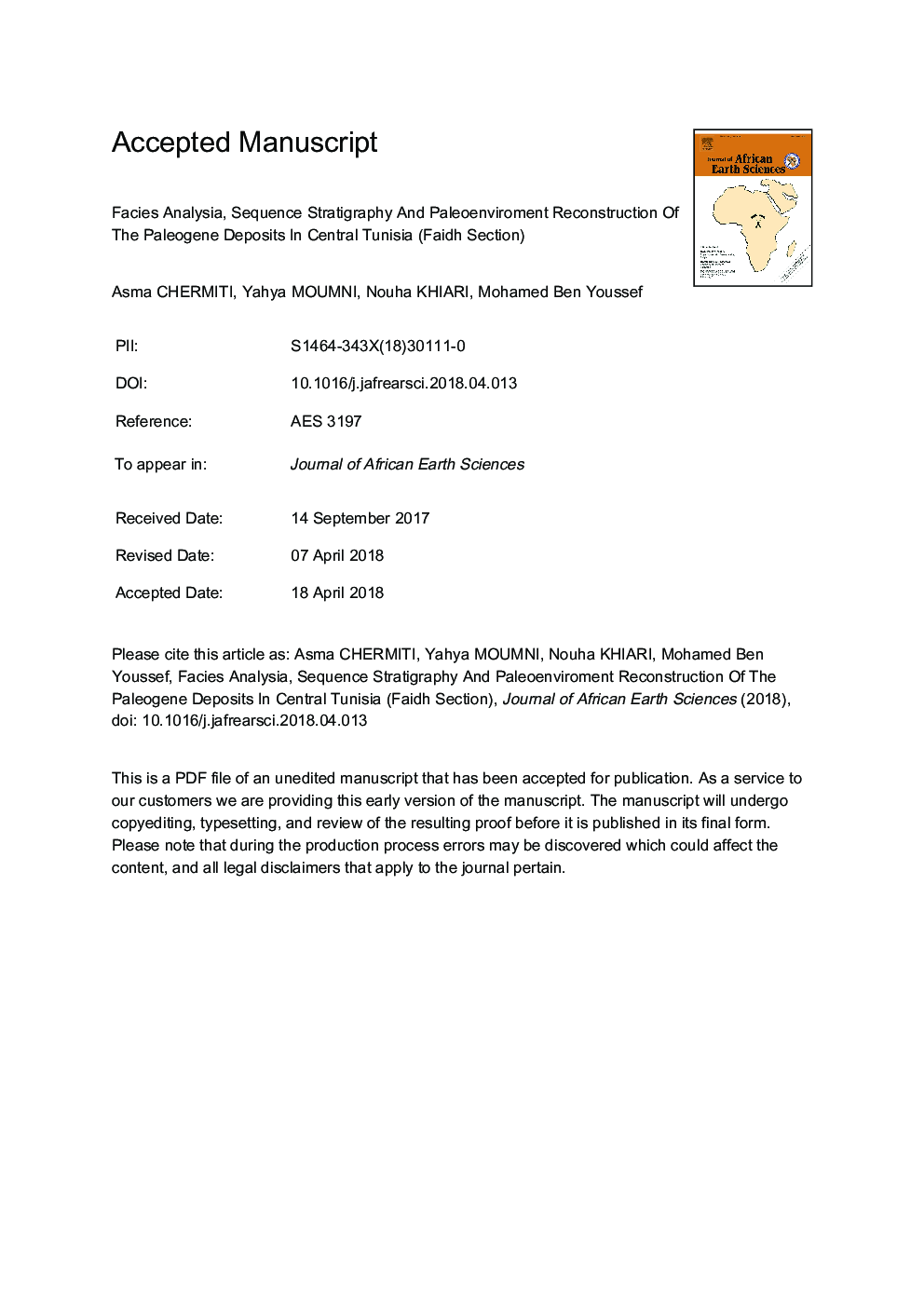| Article ID | Journal | Published Year | Pages | File Type |
|---|---|---|---|---|
| 8913441 | Journal of African Earth Sciences | 2018 | 46 Pages |
Abstract
A multi-disciplinary approach based on lithostratigraphy, biostratigraphy and mineralogy was performed to study the Paleogene deposits of Faidh section in central Tunisia. Seven units were characterized integrating lithostratigraphic description and micropaleontologic analysis. Biostratigraphy of planktonic foraminifera shows a hiatus between Upper Maastrichtian and Lower Paleocene. A sporadic appearance of planktonic foraminifera marks two transgressive levels within the lower Cherahil Formation (Lutetian). Paleogene deposits, onset in subtidal environments; occasionally under restricted conditions, controlled mainly by eustatic fluctuations. Mineralogical analysis supports this reconstruction. Sequence stratigraphy allows to subdivide the Paleogene series of the Faidh section into five tectono-eustatic cycles (2nd order) and eleven sequence deposits (3rd order), partially represented by only two system tracts or less. Every cycle is bounded by a tectonically enhanced unconformity, which laterally accede into a correlative conformity of the basin. Henceforth, the Paleogene cannot be considered as a continuous series as stated in many several studies.
Related Topics
Physical Sciences and Engineering
Earth and Planetary Sciences
Geology
Authors
Asma Chermiti, Yahya Moumni, Nouha Khiari, Mohamed Ben Youssef,
